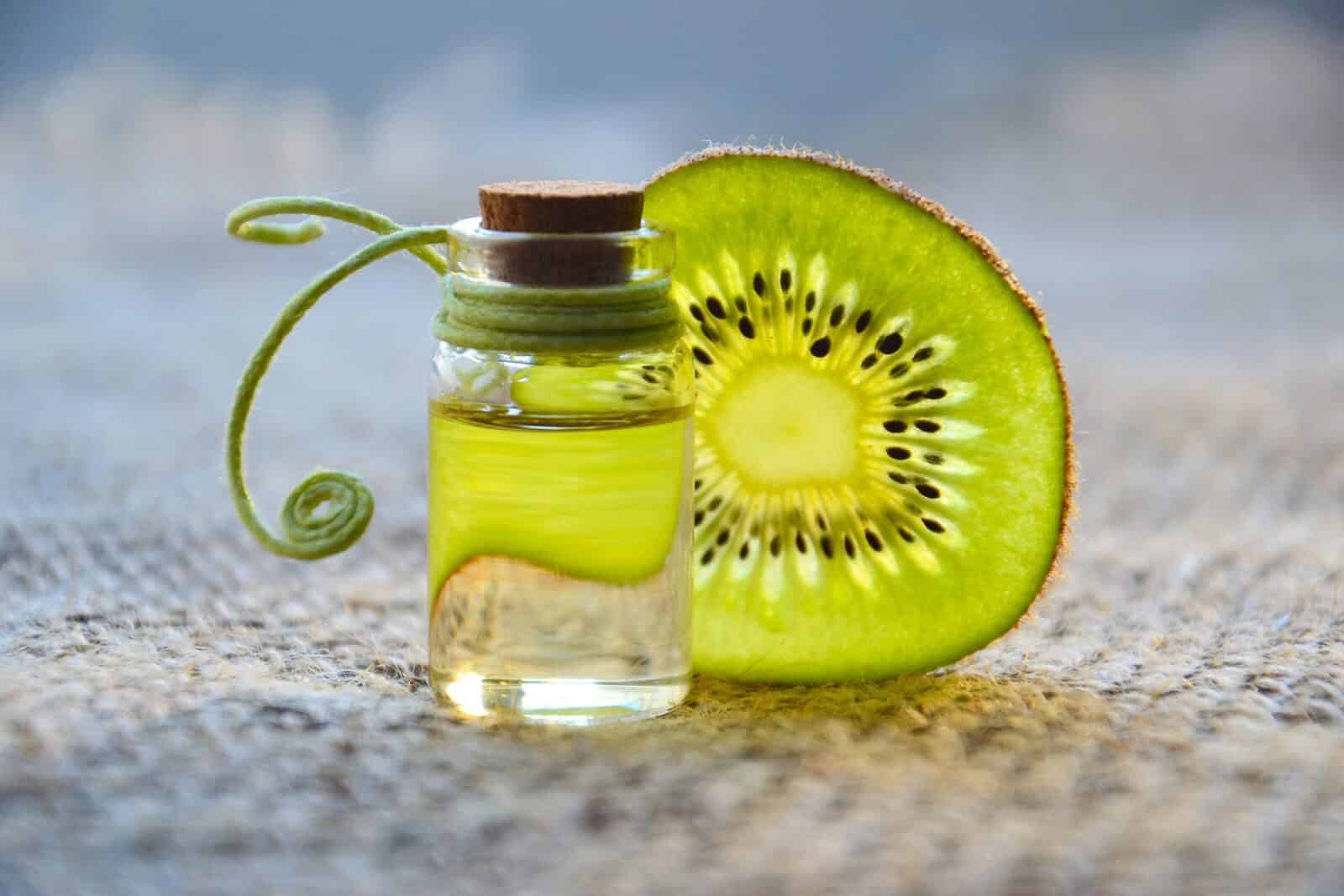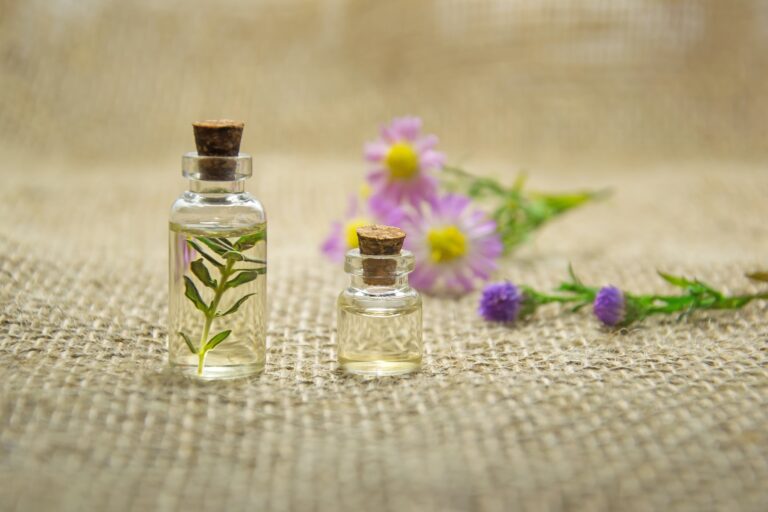HOW TO USE ESSENTIAL OIL WITHOUT A DIFFUSER(learn 11 easy methods)
Essential oils have been used for centuries for their therapeutic and aromatic properties. These natural plant extracts are derived from various parts of plants, including leaves, flowers, roots, and stems. They are highly concentrated and potent, containing the essence of the plant’s fragrance and medicinal benefits.
The popularity of essential oils has grown significantly in recent years due to their versatile applications and potential health benefits. From promoting relaxation and reducing stress to supporting skin health and soothing minor ailments, essential oils offer a holistic approach to well-being.
HOW TO USE ESSENTIAL OIL WITHOUT A DIFFUSER
It’s essential to note that essential oils should be used with caution and proper knowledge, as their potency can cause adverse reactions if not used correctly. This guide aims to provide comprehensive information on using essential oils without a diffuser, exploring various application methods and safety precautions. Whether you’re new to the world of essential oils or looking to expand your knowledge, this article will help you harness the power of these natural wonders for enhanced physical and emotional wellness. So, let’s dive into the captivating realm of essential oils and discover How to use essential oil without a diffuser in your daily life effectively.
Direct Inhalation of essential oil
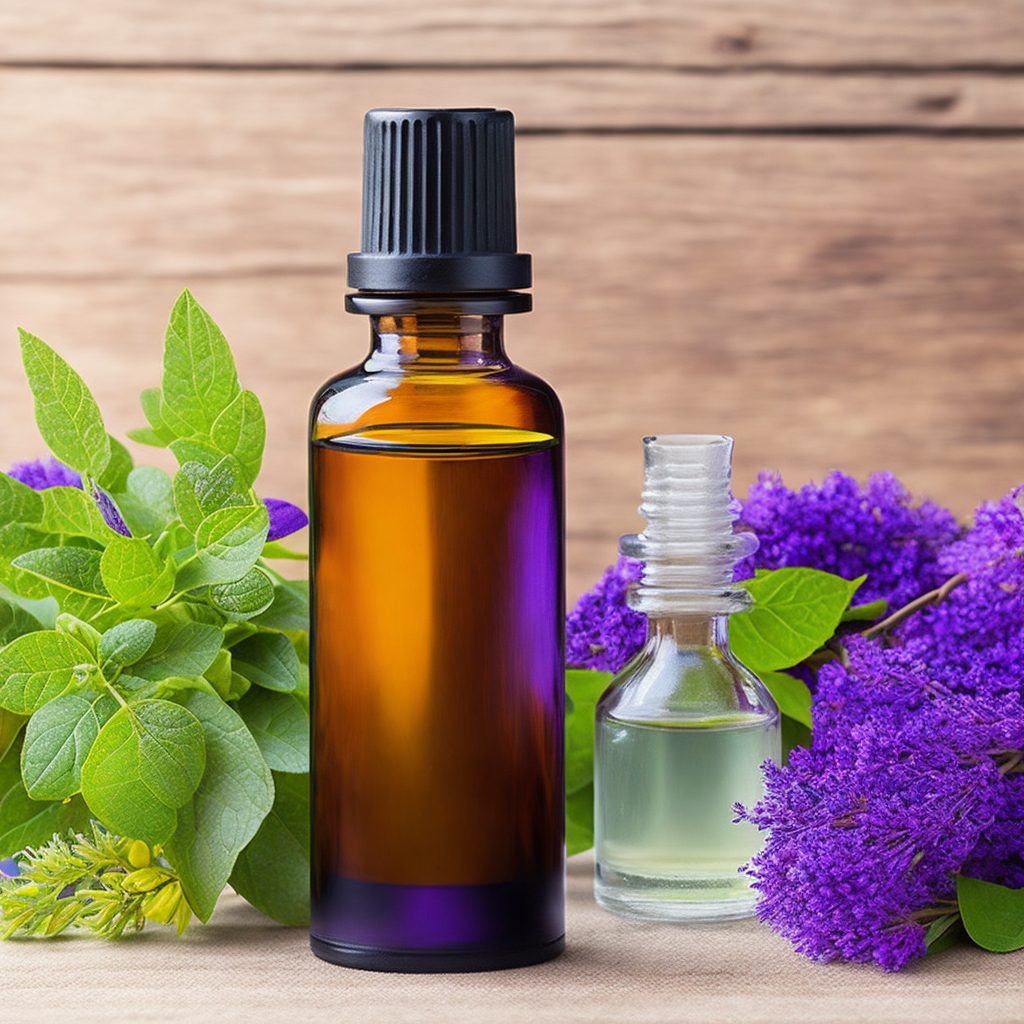
Direct inhalation is a simple and effective method of using essential oils without the need for a diffuser. This technique allows you to experience the aromatic benefits of the oils directly, making it ideal for quick relief or mood enhancement.
Methods of Direct Inhalation:
- Palm Inhalation: Place a drop or two of the desired essential oil on your palms, rub them together, and cup your hands over your nose. Take slow, deep breaths to inhale the aroma.
- Tissue or Cloth Inhalation: Add a few drops of essential oil to a tissue or a small piece of cloth and hold it near your nose. Breathe in deeply to enjoy the aromatic experience.
- Cotton Ball Inhalation: Apply a few drops of essential oil to a cotton ball and place it in a small dish or a resealable bag. Hold the bag near your nose and inhale as needed.
Benefits of Direct Inhalation:
- Quick Aromatic Relief: Direct inhalation provides almost instant access to the aromatic compounds of essential oils, offering rapid relief from stress, anxiety, or headaches.
- Portable and Convenient: This method is travel-friendly and can be easily incorporated into your daily routine.
- Customizable Blends: You can create personalized blends by combining different essential oils to suit your specific needs and preferences.
Precautions:
- Use Moderately: While direct inhalation is generally safe, avoid excessive inhalation, especially if you are sensitive to strong aromas.
- Avoid Eye Contact: Be cautious not to let the essential oils come in contact with your eyes, as they can cause irritation.
- Pregnancy and Medical Conditions: If you are pregnant, nursing, or have any medical conditions, consult a healthcare professional before using essential oils for direct inhalation.
Remember that direct inhalation is a powerful method and a little goes a long way. When used correctly, it can provide a delightful aromatic experience and offer various emotional and mental benefits. Experiment with different essential oils and find the perfect blends that resonate with your senses and promote your overall well-being.
Cold Air Diffuser of essential oil without a diffuser

A cold air diffuser is a popular device used to disperse essential oils into the air without heating them. Unlike heat-based diffusers, cold air diffusers use nebulizing or ultrasonic technology to break down the essential oils into tiny particles, creating a fine mist that is released into the atmosphere.
How Cold Air Diffusers Work:
- Ultrasonic Diffusers: These diffusers use ultrasonic vibrations to create a fine mist of essential oils and water. The essential oils are mixed with water in the reservoir, and the ultrasonic vibrations break the mixture into microparticles, releasing them as a cool mist into the air.
- Nebulizing Diffusers: Nebulizers work by forcing a stream of air through a small tube, which causes the essential oils to break into droplets. These droplets are then released as a fine mist into the air without the need for water or heat.
Benefits of Cold Air Diffusers:
- Preserve Therapeutic Properties: Cold air diffusers preserve the natural therapeutic properties of essential oils since they do not use heat, which can sometimes degrade the oils’ beneficial compounds.
- Strong Aromatherapy Experience: The mist released by cold air diffusers carries a potent aroma, providing a powerful and long-lasting aromatherapy experience.
- No Water Needed: Nebulizing diffusers, in particular, don’t require water for operation, making them more convenient and less messy to use.
- Coverage Area: Cold air diffusers can effectively disperse essential oils in larger spaces, making them suitable for living rooms, offices, and other sizable areas.
Tips for Using a Cold Air Diffuser:
- Measure Essential Oils: Follow the manufacturer’s instructions for the right amount of essential oil to use, as these diffusers are generally more efficient and require smaller quantities.
- Cleaning Regularly: To maintain the device’s performance, clean the diffuser regularly as per the manufacturer’s recommendations.
- Placement: Position the diffuser on a stable surface at an elevated level to ensure even distribution of the mist.
Precautions:
- Pet Safety: Some essential oils can be harmful to pets, so be cautious when using a cold air diffuser in a home with animals.
- Allergies and Sensitivities: If you or anyone in your household has allergies or sensitivities to certain scents, ensure to choose essential oils that are well-tolerated.
Cold air diffusers offer an excellent way to enjoy the aromatic and therapeutic benefits of essential oils throughout your living space. Experiment with different oils and blends to create a soothing and uplifting ambiance that suits your preferences and supports your well-being.
Vaporizing of essential oil without a diffuser

Vaporizing is another effective method of using essential oils without a diffuser, especially when dealing with respiratory issues or for creating a relaxing atmosphere in your space. This technique involves the use of heat to release the aromatic compounds of the essential oils into the air.
Methods of Vaporizing:
- Oil Burners: An oil burner consists of a small dish where you place a few drops of essential oil mixed with water. A tealight candle placed underneath the dish heats the water and oil mixture, releasing the aroma as steam into the air.
- Electric Vaporizers: Electric vaporizers are similar to oil burners, but they use electricity to generate heat instead of candles. You add water and a few drops of essential oil to the designated compartment, and the device heats the mixture, creating a fragrant vapor.
Benefits of Vaporizing:
- Respiratory Support: Vaporizing essential oils can help clear nasal passages and support respiratory health, making it beneficial during colds or congestion.
- Mood Enhancement: The pleasant aroma released through vaporizing can uplift your mood and create a calming and soothing environment.
- Aromatherapy for Relaxation: Vaporizing essential oils can aid in relaxation, stress reduction, and promoting better sleep.
Precautions:
- Proper Ventilation: Ensure there is adequate ventilation in the room where you’re vaporizing essential oils to avoid excessive buildup of the vapor.
- Dilution for Sensitive Individuals: If you have sensitive skin or respiratory issues, consider diluting the essential oils before vaporizing to reduce the intensity of the aroma.
- Keep Out of Reach of Children and Pets: As with any method of using essential oils, make sure to keep the vaporizing setup out of reach of children and pets.
Note: Vaporizing essential oils involves the use of heat, which can affect the oil’s delicate compounds. For this reason, vaporizing is not considered the most efficient method for preserving the full therapeutic benefits of essential oils.
Experiment with different essential oil blends to find the scents that resonate with you and suit your specific needs. Whether you’re looking to create a calming ambiance for relaxation or seeking respiratory support, vaporizing essential oils can be a delightful and effective addition to your well-being routine.
Clay Pot of essential oil without a diffuser
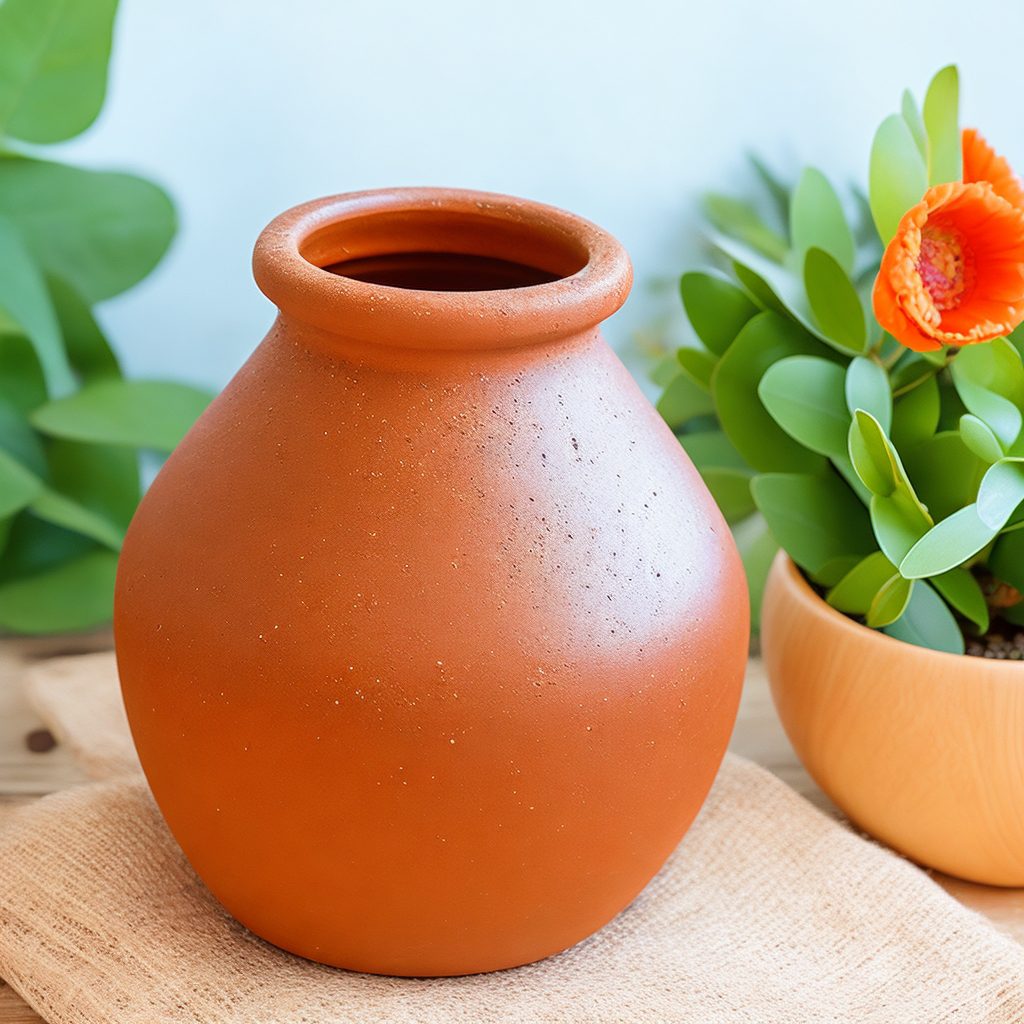
Using a clay pot for diffusing essential oils is a traditional and natural method that allows for a subtle and long-lasting release of aromatic scents. This ancient technique, also known as “passive diffusion,” harnesses the porous nature of clay to disperse the aroma throughout a room without the need for electricity or heat.
How Clay Pot Diffusion Works:
- Clay Pot Design: The clay pot used for diffusion is typically unglazed and has a small opening at the top. The pot’s porous surface absorbs the essential oils, and the scent gradually evaporates into the surrounding air.
- Terracotta Disc: Inside the clay pot, there is often a terracotta disc or saucer. This disc serves as a platform for absorbing essential oils and helps regulate the diffusion process.
Using Clay Pot Diffusion:
- Choose the Right Essential Oils: Select essential oils with scents that you want to diffuse into the air. Single oils or blends can be used depending on your preferences.
- Saturate the Terracotta Disc: Place a few drops of your chosen essential oils onto the terracotta disc inside the clay pot. The porous nature of the clay will absorb the oils.
- Allow for Diffusion: Once the disc is saturated, put the lid on the clay pot and position it in the desired room. Over time, the oils will gradually evaporate, releasing the aromatic scent into the air.
Benefits of Clay Pot Diffusion:
- Natural and Passive: Clay pot diffusion is a simple and eco-friendly method that requires no electricity or heat source.
- Subtle and Long-lasting Aroma: The aroma released by clay pot diffusion is gentle and can last for an extended period, making it ideal for creating a constant ambiance in a room.
- Preservation of Essential Oil Properties: Since there is no heat involved, the therapeutic properties of the essential oils remain intact during the diffusion process.
Precautions:
- Monitor Oil Usage: Be mindful of the number of essential oil drops you add to the terracotta disc, as using too much oil at once can result in an overpowering scent.
- Regular Cleaning: Clean the clay pot and terracotta disc regularly to avoid the accumulation of residue and ensure the diffusion remains effective.
Clay pot diffusion provides a charming and low-maintenance way to incorporate essential oils into your living space. Its simplicity and natural approach make it an excellent option for those seeking a gentle and continuous aromatic experience without the need for complicated devices or equipment
Reusable Room Spray of essential oil without a diffuser
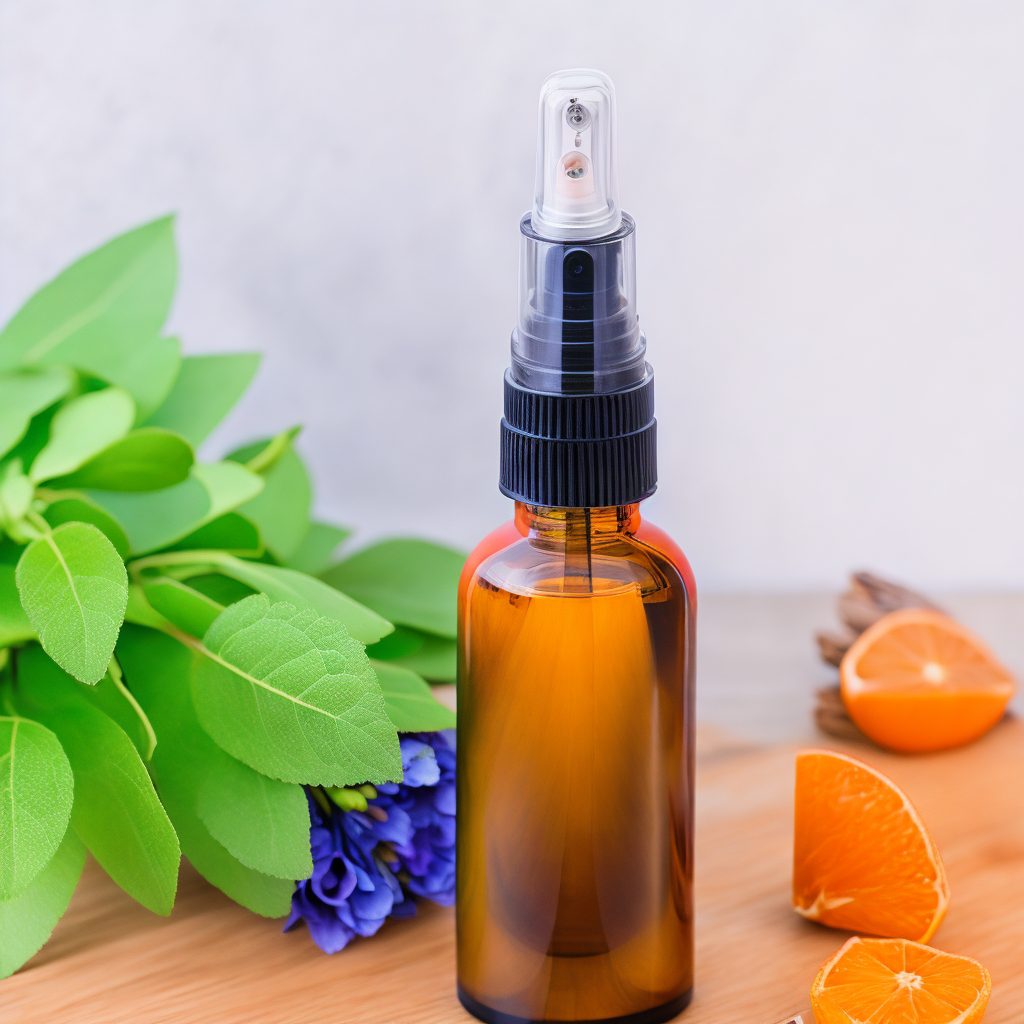
Creating a reusable room spray with essential oils is an eco-friendly and customizable way to freshen up your living space with delightful scents. This do-it-yourself project not only allows you to enjoy the benefits of aromatherapy but also helps reduce waste associated with single-use air fresheners.
Materials Needed:
- Spray Bottle: Choose a high-quality, reusable spray bottle made of glass or durable plastic. Look for one with a fine mist nozzle for even distribution.
- Essential Oils: Select your favorite essential oils or create a unique blend of oils with complementary scents. Consider oils with antibacterial properties for added benefits.
- Witch Hazel or Vodka: Witch hazel or vodka will act as a dispersing agent to help the oils mix with water and prevent separation.
- Distilled Water: Opt for distilled water to prevent bacterial growth and extend the shelf life of your room spray.
- Optional: Vegetable Glycerin: If you want a longer-lasting scent, vegetable glycerin can be added to the mixture.
Instructions:
- Prepare the Spray Bottle: Clean the spray bottle thoroughly before use. If it’s a new bottle, rinse it with warm soapy water and let it dry completely.
- Select Essential Oils: Choose your desired essential oils or create a blend. Popular options include lavender, citrus oils (such as sweet orange or lemon), eucalyptus, and peppermint.
- Create the Essential Oil Blend: In a separate bowl, mix 20-30 drops of essential oils in total. You can adjust the number of drops for each oil depending on your scent preferences.
- Add the Dispersing Agent: To help the essential oils mix with water, add one teaspoon of witch hazel or vodka to the bowl containing the essential oil blend. If using vegetable glycerin, add a half teaspoon.
- Combine with Water: Pour 1/2 cup of distilled water into the bowl with the essential oil blend and dispersing agent. Stir gently to combine the ingredients.
- Transfer to the Spray Bottle: Use a funnel to pour the mixture into the spray bottle. Leave a little space at the top to prevent spills when attaching the spray nozzle.
- Label and Store: Label your reusable room spray with the essential oils used and the date of creation. Store it in a cool, dark place to preserve the quality of the oils.
How to Use:
Shake the spray bottle well before each use. Spray the desired amount of the room spray into the air, aiming away from your face and eyes. Enjoy the refreshing and invigorating scent as it lingers in your living space.
Note: As with any essential oil product, perform a patch test to check for possible skin irritation before using the room spray. Avoid spraying directly onto fabrics, furniture, or delicate surfaces that may be affected by the oils. With this reusable room spray, you can now embrace a more sustainable and aromatic approach to freshening up your home.
Use directly by hand of essential oil without a diffuser
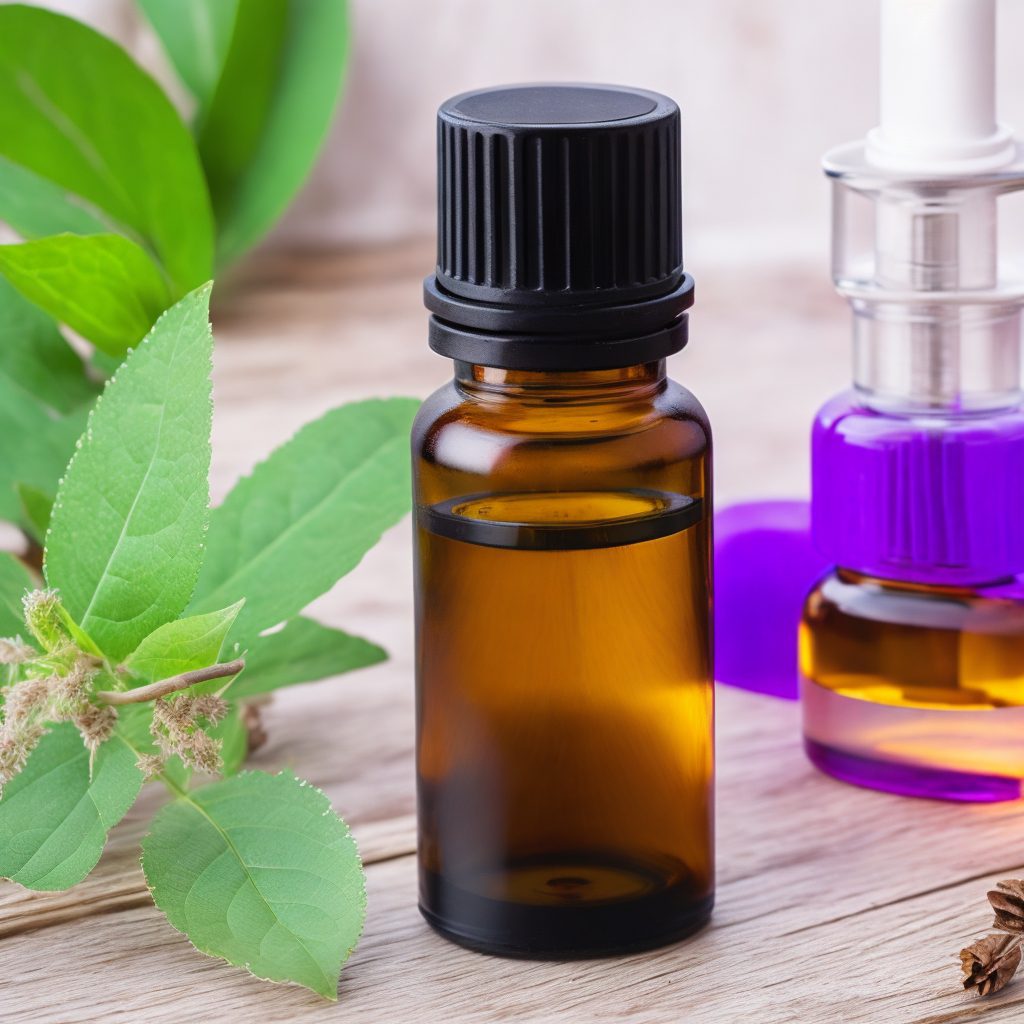
Using essential oils directly by hand is a simple and convenient method to experience their aromatic and therapeutic benefits. This technique involves applying a small amount of essential oil to your palms and inhaling the aroma or massaging it onto specific areas of your body.
How to Use Essential Oils Directly by Hand:
- Select the Essential Oil: Choose a single essential oil or create a blend that aligns with your desired mood or therapeutic effect.
- Perform a Patch Test (Optional): If you are using a new essential oil or have sensitive skin, consider performing a patch test on a small area of your skin to check for any adverse reactions.
- Inhalation Method:
- Place one or two drops of the selected essential oil in the palm of your hand.
- Rub your hands together to warm the oil and release its aroma.
- Cup your hands over your nose and mouth and take slow, deep breaths to inhale the scent.
- Topical Application Method:
- Place a small amount of the essential oil (about 1-3 drops) on your palm.
- Gently rub your palms together to spread the oil evenly.
- Apply the oil to specific areas of your body that may benefit from the oil’s properties, such as temples, neck, wrists, or the soles of your feet.
Benefits of Using Essential Oils Directly by Hand:
- Immediate Aromatic Experience: Applying the oil directly to your hands allows you to experience the aromatic benefits of essential oils instantly.
- Portable and Convenient: This method is travel-friendly and can be used whenever you need a quick aromatherapy session.
- Precise Application: Applying the oil by hand allows you to target specific areas or acupressure points on your body.
Precautions:
- Proper Dilution (for Topical Use): When applying essential oils directly to the skin, ensure proper dilution, especially for sensitive skin. You can mix essential oils with a carrier oil like coconut oil or jojoba oil to reduce the risk of irritation.
- Avoid Sensitive Areas: Refrain from applying essential oils near the eyes, inside the ears, or on sensitive mucous membranes.
- Moderation: Use essential oils by hand in moderation, as excessive use may lead to skin irritation or sensitization.
Using essential oils directly by hand is a quick and effective way to enjoy their natural goodness without the need for additional equipment or diffusers. It’s a versatile method that allows you to enjoy aromatherapy on the go and experience the various benefits of essential oils firsthand.
Oil liquid soap to use essential oil without a diffuser
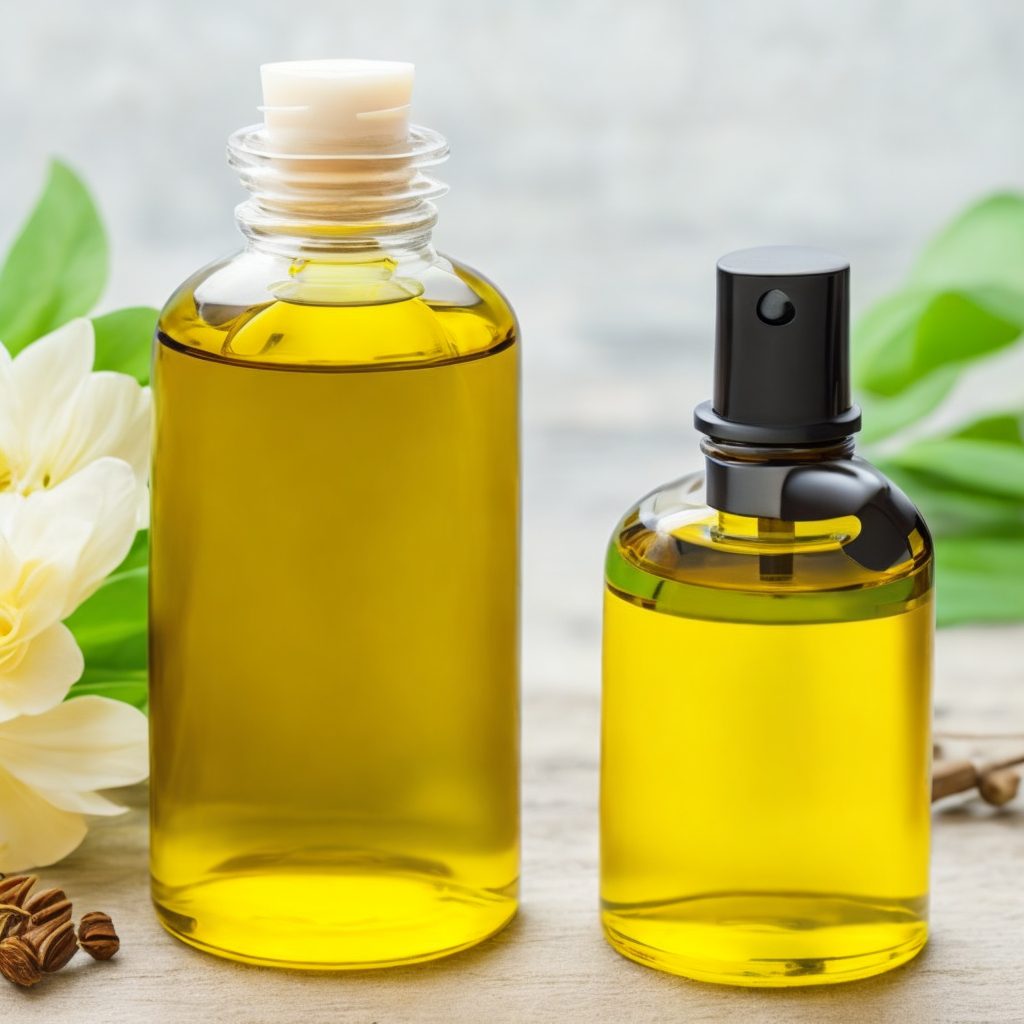
Oil liquid soap, also known as oil-based liquid soap or oil-infused liquid soap, is a luxurious and nourishing alternative to traditional liquid soaps. Unlike conventional soap which relies on water as its main ingredient, oil liquid soap primarily consists of nourishing oils that cleanse, moisturize, and pamper the skin.
Key Ingredients:
- Carrier Oils: Carrier oils are the foundation of oil liquid soap. They provide cleansing properties and contribute to the soap’s texture and nourishing benefits. Common carrier oils used include olive oil, coconut oil, almond oil, jojoba oil, and avocado oil.
- Potassium Hydroxide (KOH): KOH is the alkali used in the saponification process to convert oils into soap. It is essential for transforming the oils into a liquid soap form.
- Distilled Water: While oil liquid soap mainly consists of oils, a small amount of distilled water is used to balance the formulation and create a smooth texture.
- Essential Oils (Optional): To add fragrance and additional therapeutic benefits, essential oils can be included in the oil liquid soap. Lavender, tea tree, eucalyptus, and citrus oils are popular choices.
Making Oil Liquid Soap:
Creating oil-liquid soap typically involves a saponification process, where the oils are mixed with potassium hydroxide (KOH) and distilled water. This mixture is then carefully heated and stirred until the oils and KOH combine, resulting in a thick, luxurious liquid soap.
Benefits of Oil Liquid Soap:
- Moisturizing and Nourishing: The high content of nourishing oils in oil liquid soap leaves the skin feeling soft, hydrated, and nourished after each use.
- Gentle Cleansing: Oil liquid soap provides a gentle cleansing action, making it suitable for sensitive skin types.
- Luxurious Lather: When agitated or used with a foaming pump, oil liquid soap creates a rich and creamy lather that feels indulgent during use.
- Customizable Formulations: DIY enthusiasts can tailor oil liquid soap recipes to their preferences, choosing specific carrier oils and essential oils for personalized benefits and scents.
Precautions:
- Proper Measurements: When making oil-liquid soap from scratch, precise measurements and accurate saponification calculations are crucial for a safe and effective product.
- Testing: Always conduct a patch test on a small area of skin before using a new oil liquid soap, especially if you have sensitive skin or known allergies.
Oil liquid soap offers a delightful and nourishing cleansing experience, making it an excellent choice for those seeking a luxurious and moisturizing alternative to commercial liquid soaps. Whether store-bought or homemade, this indulgent soap is sure to elevate your daily bathing routine and leave your skin feeling pampered and revitalized.
Essential oil bath bombs to use essential oil without a diffuser
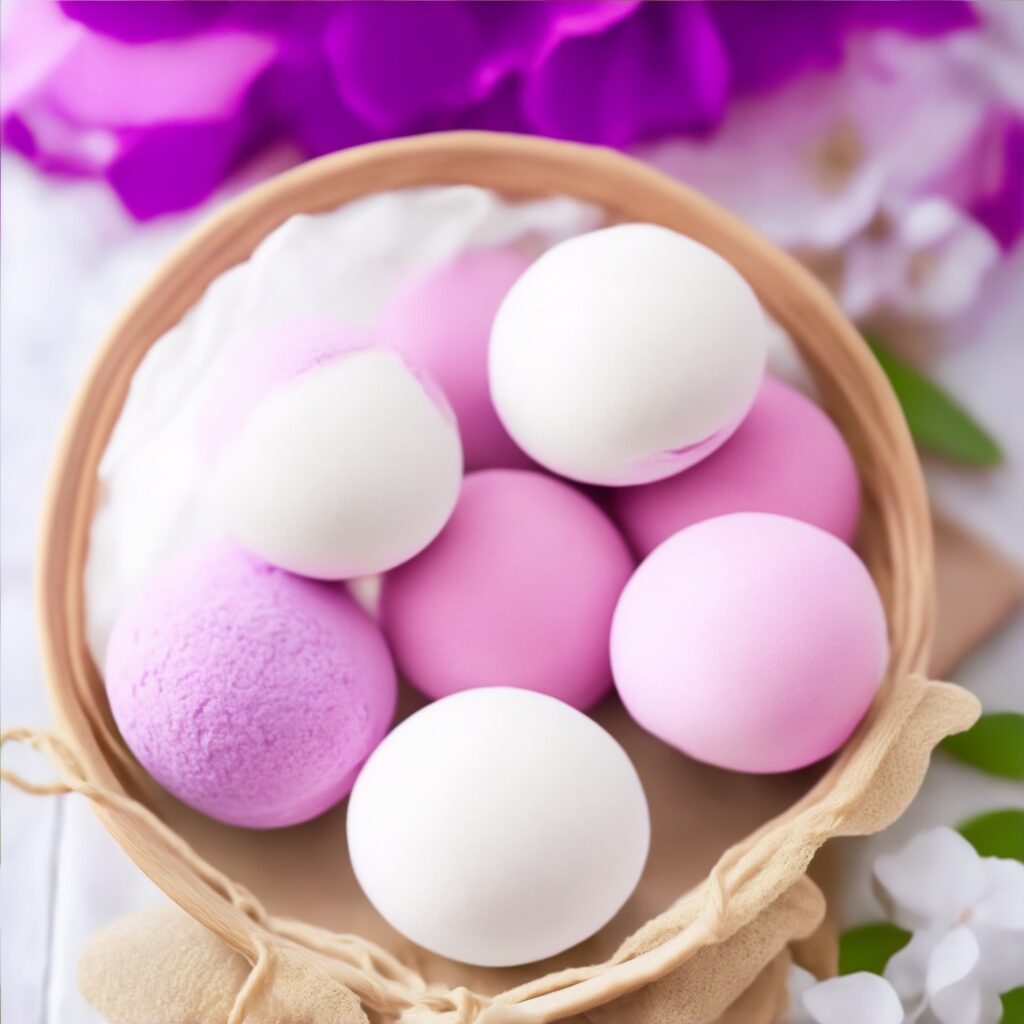
Essential oil bath bombs are delightful and fizzy bathing products that add a touch of luxury and aromatherapy to your bath time. These handcrafted creations combine the benefits of essential oils with the fun and effervescence of bath bombs, creating a soothing and rejuvenating experience for both the mind and body.
Key Ingredients:
- Baking Soda (Sodium Bicarbonate): Baking soda is the primary ingredient that gives bath bombs their characteristic fizziness. It also helps to soften the water and cleanse the skin.
- Citric Acid: Citric acid is responsible for the effervescent reaction when combined with baking soda. It creates the fun fizziness in the bath bomb.
- Cornstarch (or Arrowroot Powder): Cornstarch or arrowroot powder helps to bind the ingredients together and adds a silky feel to the bathwater.
- Epsom Salt: Epsom salt provides soothing properties and helps to relax sore muscles, making it an excellent addition to bath bombs.
- Carrier Oil: A carrier oil, such as sweet almond oil, coconut oil, or jojoba oil, adds moisturizing benefits to the bath bombs and helps disperse the essential oils evenly.
- Essential Oils: Essential oils are the star of the bath bomb, providing the aromatic experience and therapeutic benefits. Popular choices include lavender for relaxation, eucalyptus for congestion relief, and citrus oils for an uplifting ambiance.
- Optional Additions: Depending on your preferences, you can add natural colorants like mica or dried flower petals to enhance the appearance of the bath bombs.
Making Essential Oil Bath Bombs:
- Dry Ingredients: In a mixing bowl, combine baking soda, citric acid, cornstarch (or arrowroot powder), and Epsom salt. Mix them thoroughly until well combined.
- Wet Ingredients: In a separate bowl, mix the carrier oil with a few drops of your chosen essential oils. Stir well to ensure even distribution of the oils.
- Combining the Ingredients: Slowly pour the wet ingredients into the dry ingredients while whisking continuously. The mixture should resemble damp sand and hold its shape when pressed together.
- Molding: Firmly pack the mixture into bath bomb molds or shape them by hand into balls or other desired shapes. Let them dry and set in the molds for a few hours or overnight.
- Unmolding and Storage: Carefully unmold the bath bombs and allow them to dry completely before storing them in an airtight container.
Benefits of Essential Oil Bath Bombs:
- Aromatherapy: The essential oils infused in the bath bombs provide a calming and therapeutic aromatic experience, promoting relaxation and reducing stress.
- Skin Nourishment: The moisturizing properties of carrier oils help to hydrate and nourish the skin, leaving it soft and supple after the bath.
- Relaxing Bathing Experience: The fizziness and release of essential oils create a luxurious and spa-like bathing experience in the comfort of your own home.
Precautions:
- Skin Sensitivity: Perform a patch test before using essential oil bath bombs, especially if you have sensitive skin or allergies to certain essential oils.
- Caution with Essential Oils: Use essential oils in appropriate dilutions and follow recommended guidelines, as some oils may irritate the skin if used in excess.
With essential oil bath bombs, you can transform your regular bathing routine into a pampering and aromatic experience. Unwind, relax, and enjoy the soothing benefits of essential oils as you soak in the blissful waters of your very own aromatic bath.
Essential oils lamps to use essential oil without a diffuser
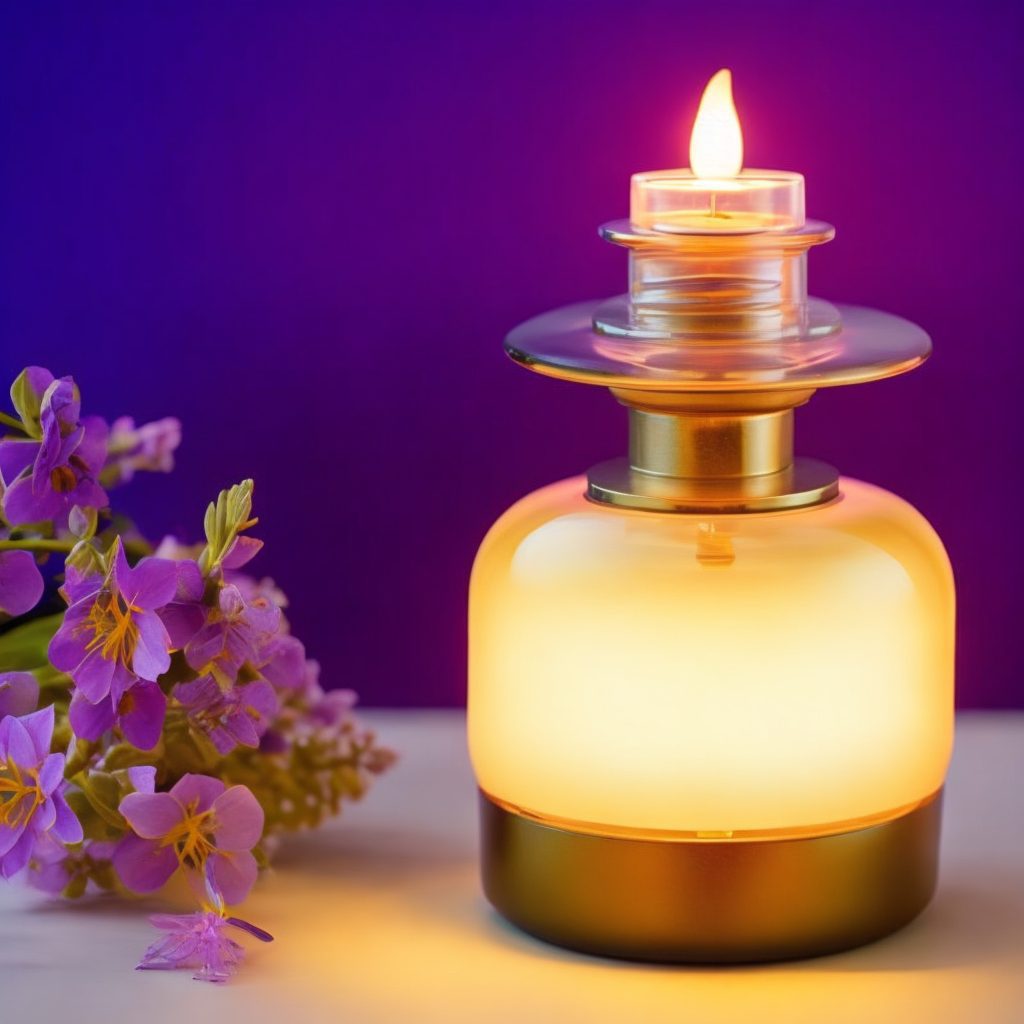
Essential oil lamps, also known as oil diffuser lamps or oil burners, are elegant and effective devices used to disperse the aromatic properties of essential oils into the air. These lamps offer a unique and stylish way to incorporate the benefits of aromatherapy into your living space, creating a soothing and inviting ambiance.
Key Features of Essential Oil Lamps:
- Design Variety: Essential oil lamps come in a wide range of designs and materials, from ceramic and glass to metal and stone. Their aesthetic appeal makes them attractive decorative elements in any room.
- Tealight or Electric Operated: Essential oil lamps can be either operated by a tealight candle, where the heat from the candle warms the oil, or electrically, using a bulb or a heating element to disperse the essential oil aroma.
- Oil Dish or Well: The lamp features a shallow dish or well where you place water mixed with a few drops of essential oils. The heat source warms the water and oil mixture, causing the aroma to diffuse into the air.
Using Essential Oil Lamps:
- Selecting Essential Oils: Choose your preferred essential oils or create a blend of oils to achieve your desired scent and therapeutic effects.
- Adding Water and Essential Oils: Fill the lamp’s dish or well with water, leaving enough space for the essential oils. Add 5-10 drops of essential oils to the water, depending on the strength of the aroma you desire.
- Tealight Operated Lamps: Place a lit tealight candle in the designated compartment below the lamp’s dish. The candle’s heat will warm the water and essential oils, releasing the aromatic vapor into the air.
- Electric Operated Lamps: If the lamp is electric, simply switch it on, and the heating element will warm the water and essential oils to create the desired ambiance.
Benefits of Essential Oil Lamps:
- Aromatic Ambiance: Essential oil lamps create a calming and inviting atmosphere with the gentle diffusion of pleasant scents.
- Aromatherapy Benefits: The therapeutic properties of the essential oils can support relaxation, stress relief, and emotional well-being.
- Decorative Element: Essential oil lamps serve as decorative pieces that add character and charm to your home decor.
Precautions:
- Proper Dilution: When using essential oils in essential oil lamps, it’s essential to dilute them with water to prevent excessive vapor concentration.
- Candle Safety: If using a tealight-operated lamp, exercise caution when handling the open flame. Keep the lamp away from flammable objects and out of reach of children and pets.
- Cleaning: Clean the lamp’s dish regularly to avoid any residual buildup and ensure optimal diffusion.
With essential oil lamps, you can infuse your living space with enchanting scents while enjoying the therapeutic benefits of aromatherapy. Embrace the soothing and aromatic experience that essential oil lamps provide, transforming your home into a tranquil sanctuary of well-being and relaxation.
Wear a Diffuser Necklace to use essential oil without a diffuser
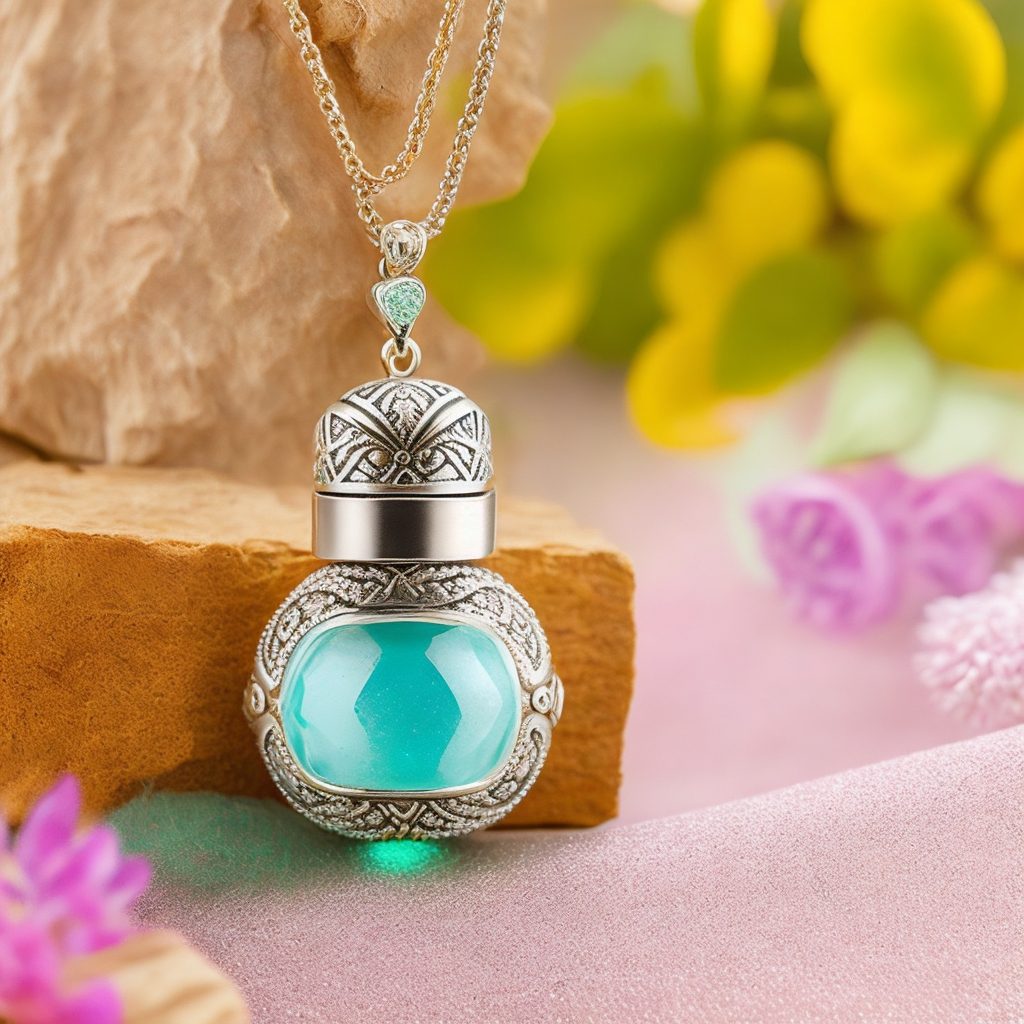
A diffuser necklace is a stylish and convenient way to enjoy the benefits of aromatherapy throughout your day. This wearable diffuser allows you to carry your favorite essential oils with you, creating a personalized and portable aromatherapy experience wherever you go.
Key Features of Diffuser Necklaces:
- Pendant Design: Diffuser necklaces typically consist of a pendant that holds a small compartment or pad where you can apply essential oils.
- Materials: Diffuser necklaces are made from various materials, including stainless steel, clay, lava stones, wood, or glass. Each material imparts its unique charm and characteristics to the necklace.
- Replaceable Pads: The pendant usually contains a replaceable pad made of porous material, such as felt or cotton, onto which you can drop the essential oils.
- Chain or Cord: The pendant is often attached to a chain or cord, allowing you to wear it comfortably around your neck.
Using a Diffuser Necklace:
- Select Essential Oils: Choose your desired essential oils or create a blend that aligns with your needs or mood. Ensure the oils are pure and high-quality.
- Apply Essential Oils to the Pad: Place a drop or two of the selected essential oils onto the replaceable pad inside the pendant. The porous material will absorb the oils and slowly release the aroma.
- Assemble the Necklace: Insert the pad back into the pendant and close it securely. Attach the pendant to the chain or cord provided with the diffuser necklace.
- Wear and Enjoy: Put on the diffuser necklace and carry the beautiful scents of the essential oils with you throughout the day. You can inhale the aroma directly from the pendant whenever you desire a moment of aromatherapy.
Benefits of a Diffuser Necklace:
- Personal Aromatherapy: A diffuser necklace allows you to create a personal and portable aromatherapy experience tailored to your preferences and needs.
- Convenient and Travel-Friendly: Wearable diffusers are compact and easy to carry, making them ideal for travel or busy lifestyles.
- Subtle Aroma: The necklace provides a subtle and gentle aroma, perfect for individual use without overwhelming others in shared spaces.
- Stylish Accessory: Diffuser necklaces come in various designs and materials, making them fashionable accessories that complement your outfit.
Precautions:
- Proper Cleaning: Clean the replaceable pad regularly and replace it when it becomes saturated with oils to prevent blending different scents.
- Skin Sensitivity: If you have sensitive skin or allergies, ensure the essential oils do not come into direct contact with your skin.
Wearing a diffuser necklace is an enchanting way to incorporate aromatherapy into your daily life. Experience the therapeutic benefits of essential oils wherever you go, and indulge in the soothing scents that uplift your mood and enhance your well-being.
Essential oils hand sanitizer to use essential oil without a diffuser
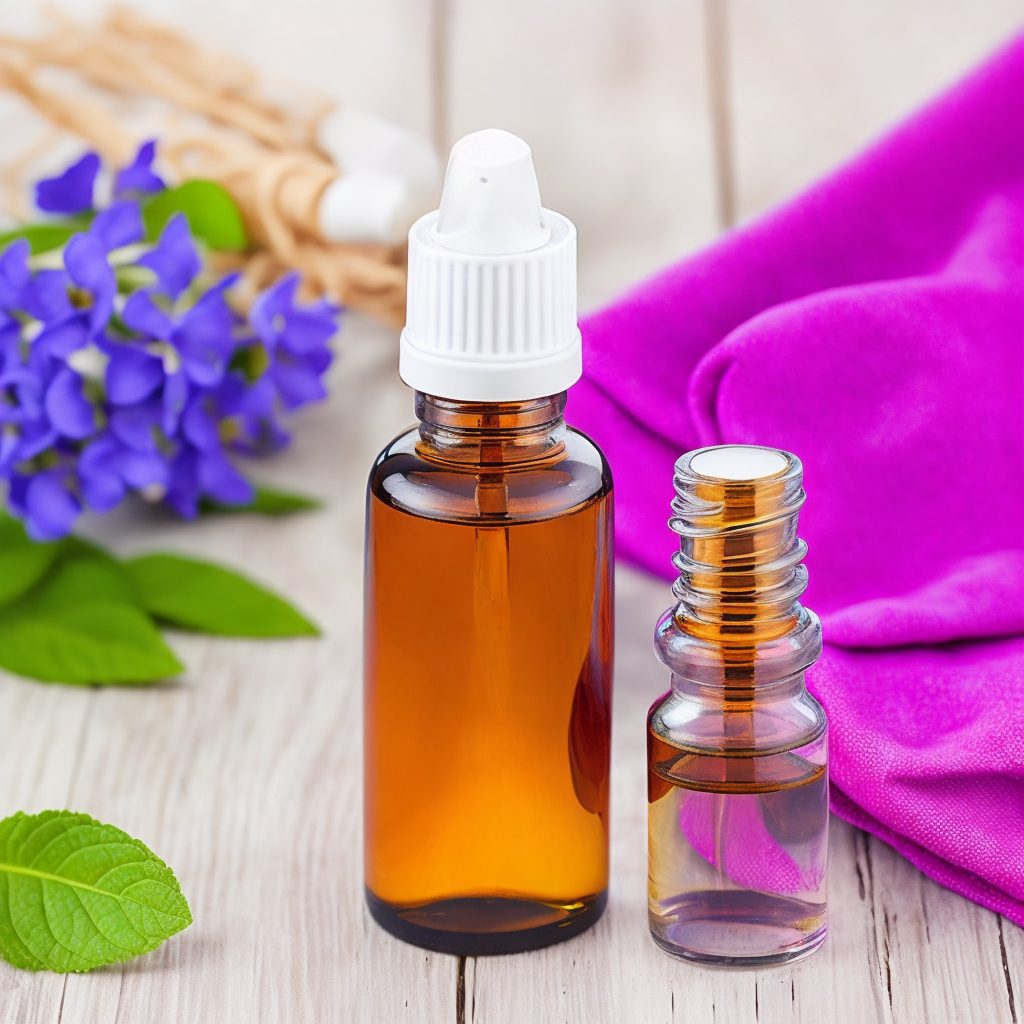
An essential oils hand sanitizer is a natural and aromatic alternative to commercial hand sanitizers, offering both sanitizing properties and the benefits of aromatherapy. This DIY hand sanitizer allows you to create a personalized blend of essential oils while effectively cleaning and refreshing your hands.
Ingredients:
- Isopropyl Alcohol or Ethanol: Isopropyl alcohol or ethanol is the primary sanitizing agent in the hand sanitizer, effectively killing germs and bacteria.
- Aloe Vera Gel: Aloe vera gel is added to the mixture to moisturize and soothe the skin, preventing it from becoming dry from the alcohol.
- Essential Oils: Essential oils provide the aromatic experience and contribute their antibacterial and antiviral properties. Popular choices include tea tree oil, lavender oil, eucalyptus oil, and lemon oil.
- Optional: Vegetable Glycerin: Vegetable glycerin can be included for added moisturizing benefits and to help thicken the hand sanitizer.
Instructions:
- Mixing the Base: In a mixing bowl, combine 2/3 cup of isopropyl alcohol or ethanol with 1/3 cup of aloe vera gel. If desired, add 1/2 teaspoon of vegetable glycerin to enhance moisturization.
- Adding Essential Oils: Add 10-15 drops of your chosen essential oils to the alcohol and aloe vera mixture. Adjust the number of drops based on your desired scent strength and the specific properties of the oils.
- Stirring and Blending: Stir the mixture thoroughly to ensure the essential oils are evenly distributed and blended with the alcohol and aloe vera gel.
- Pouring into a Bottle: Use a funnel to pour the hand sanitizer mixture into a small and portable squeeze bottle or a reusable silicone travel container.
- Labeling and Storage: Label the bottle with the contents and date of creation. Store the hand sanitizer in a cool, dry place away from direct sunlight.
How to Use:
Squeeze a small amount of the essential oils hand sanitizer into the palm of your hand and rub your hands together until dry. The alcohol content effectively sanitizes your hands, while the aromatic essential oils leave behind a pleasant and refreshing scent.
Benefits of Essential Oils Hand Sanitizer:
- Effective Sanitization: The alcohol content in the hand sanitizer provides powerful germ-killing properties.
- Aromatic Experience: The essential oils add a delightful and uplifting aroma, transforming a routine task into a sensory pleasure.
- Moisturizing: The inclusion of aloe vera gel and optional vegetable glycerin helps to prevent dryness and keeps your hands feeling soft.
Precautions:
- Alcohol Content: Ensure the hand sanitizer contains at least 60% alcohol to be effective against germs and viruses.
- Essential Oil Dilution: Properly dilute essential oils to avoid skin irritation. If you have sensitive skin, perform a patch test before using the hand sanitizer.
Using essential oils and hand sanitizer offers a dual benefit of cleanliness and aromatherapy, making it a simple and enjoyable way to maintain hygiene while nurturing your well-being. Carry this aromatic defense with you and enjoy the comforting scents and added protection wherever you go.
Final Thoughts
In conclusion, the world of essential oils offers a myriad of possibilities to enhance our well-being, transform our surroundings, and elevate our daily experiences. From diffusing essential oils to wearing them in diffuser necklaces, and even creating DIY products like oil liquid soaps and hand sanitizers, we can easily incorporate the benefits of aromatherapy into our lives.
By embracing essential oils and incorporating them into our daily routines, we can create a harmonious and balanced environment, turning our homes and personal spaces into sanctuaries of well-being. Whether seeking relaxation, focus, or immune support, essential oils offer a natural and delightful solution.
So, let us immerse ourselves in the enchanting world of essential oils, where every drop carries the essence of nature’s gifts. Embrace the power of aromatherapy, and may the delightful scents and healing properties of essential oils bring joy, comfort, and renewed vitality to our lives every day.

